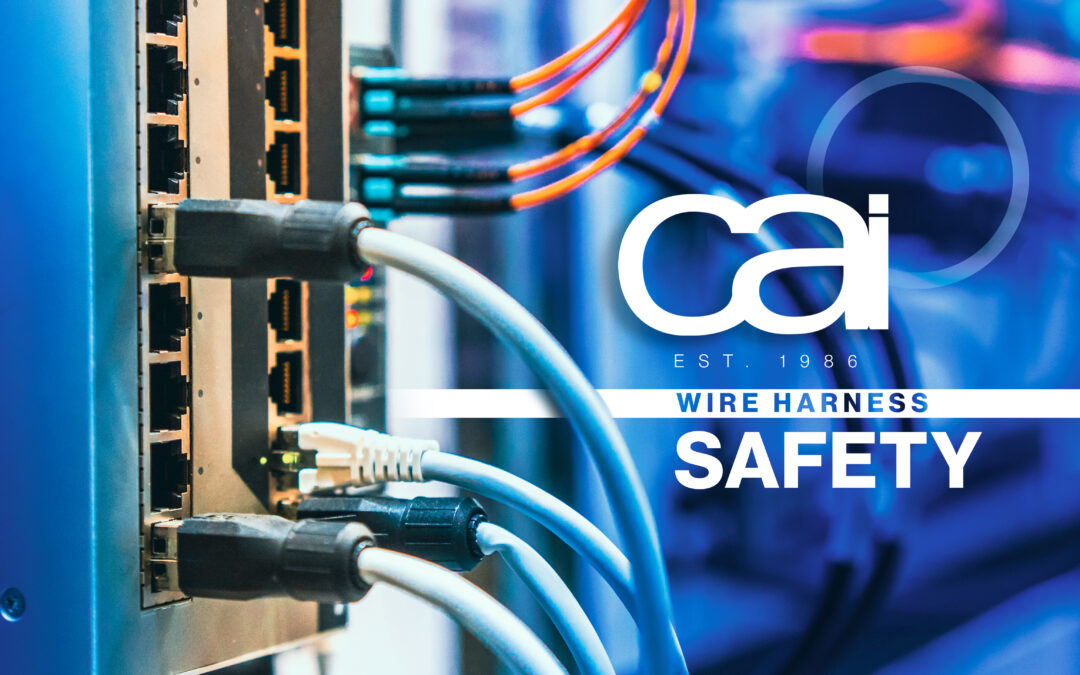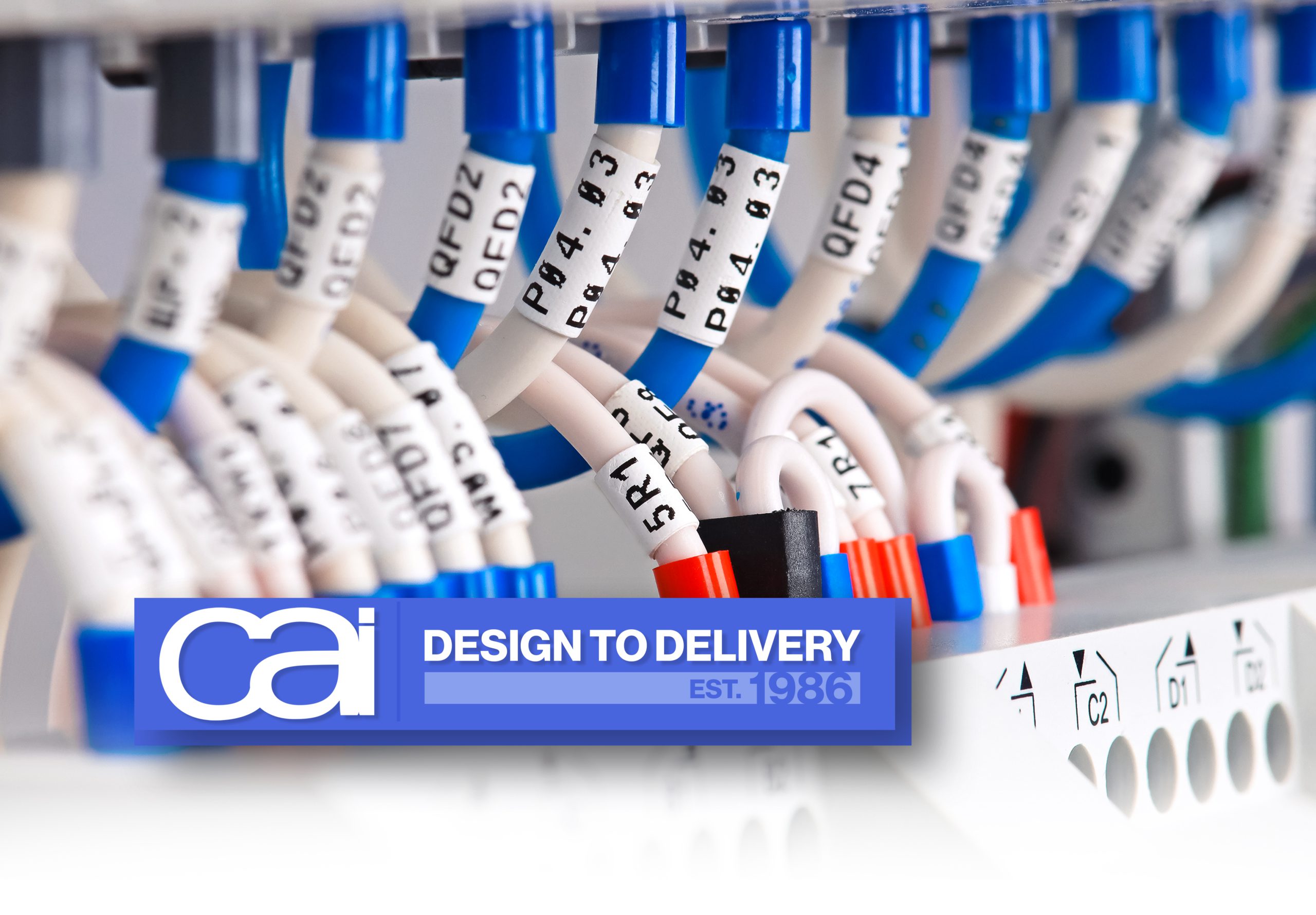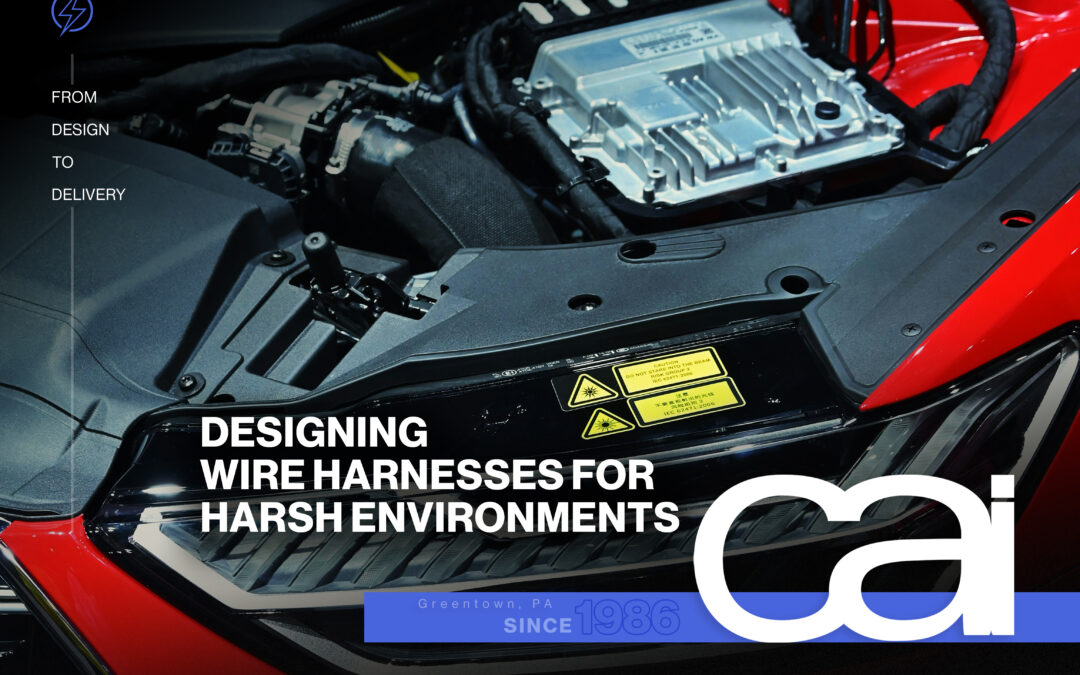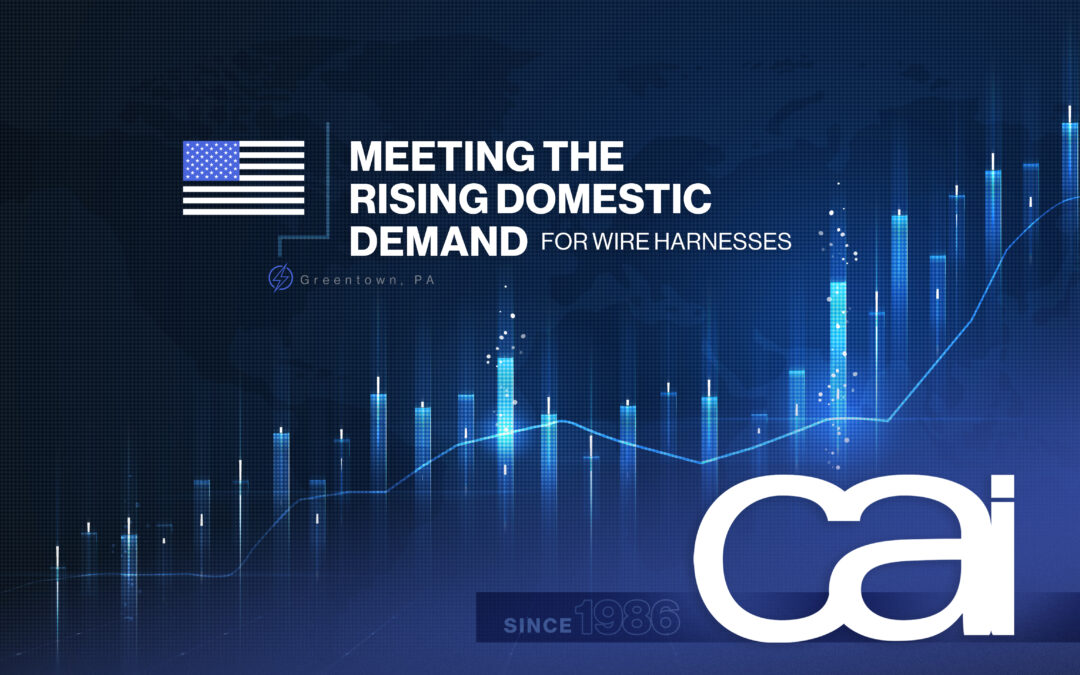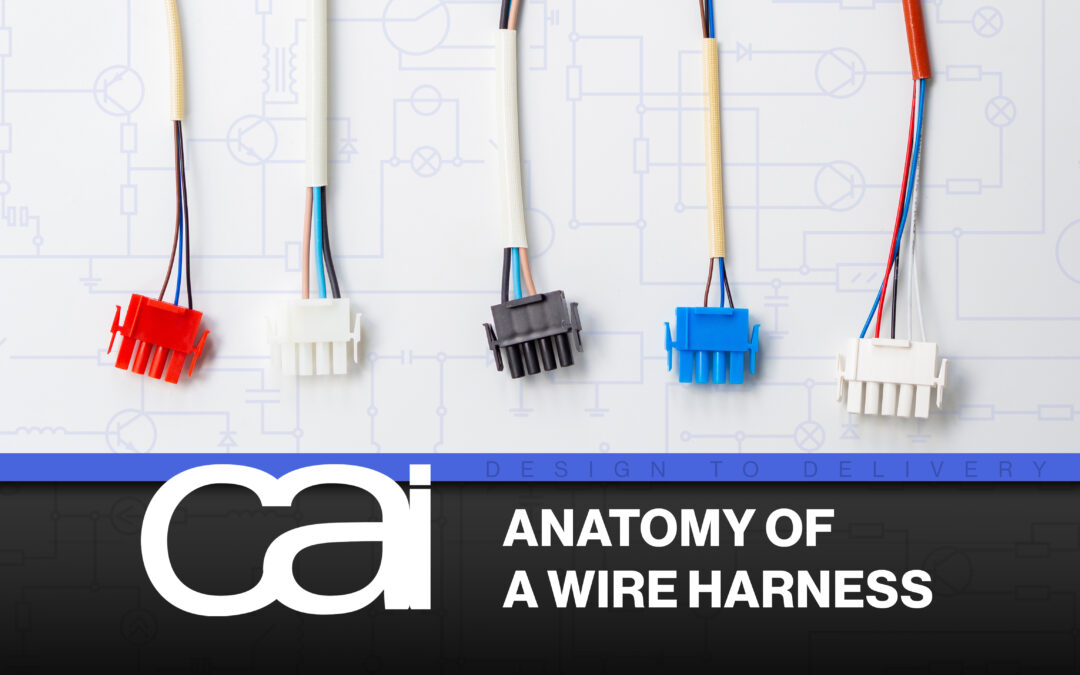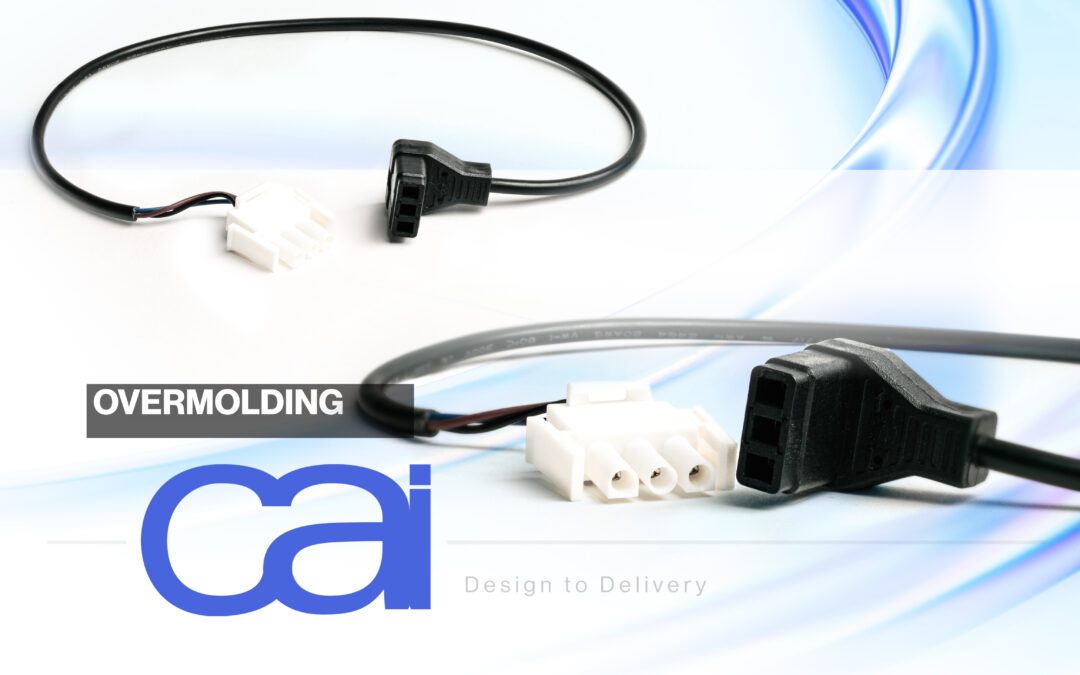Effective Wire Harness Labeling Enhances Maintenance, Safety, & Compliance
Wire harnesses facilitate the flow of power and data for a vast majority of complex electrical systems we rely on every day, from automobiles to airplanes. Within a wire harness, there are a number of different components, wires, and connection points that typically require accurate systematic labeling, or marking, in order to distinguish them from each other and provide valuable information.
From large industrial desktop laser printers to portable handheld printers, there are a number of high-quality tools that allow for quick and easy labeling used to identify a single wire, several wires, or an entire harness.
Wire Color-Coding Alone May Not Be Enough
Wire harnesses often feature wire color-coding, or the use of a color system to help distinguish wires from each other, which is based on one of many wire identification standards and factors such as location, installation type, or voltage. While color-coding alone may suffice for some wire harnesses, the use of labeling is often also needed to eliminate ambiguity and offer further clarity when working with a different company’s product or an organization that may be used to different color schemes.
CAI has been providing industries across the globe with high-quality, custom wire harnesses, cable assemblies, and other electrical solutions for over 35 years. We can expertly handle all your custom wire harness manufacturing needs and also guide you to the best labeling options. For more details about what we offer, check out our website today!
What Information Goes on Wire Harness Assembly Labels?
Wiring harness labels are used to convey essential information in a variety of ways, including:
Text
Labels have the ability to display a certain amount of letters, numbers, and symbols to provide textual information including date codes, serial numbers, letters, ID numbers, points of origin, bar codes, , reference numbers, and company logos.
Barcodes
From Code 39 Full ASCII to QR Code, barcode formats offer the ability to quickly access key information when scanned with the proper equipment.
Certification Codes
When dealing with UL (Underwriters Laboratories) products, a wire harness may be labeled with UL or CSA certifications to indicate compliance with performance and safety standards.
How Does Labeling Benefit a Wire Harness?
Accurate, comprehensible labeling on a wire harness is important for a number of reasons, including:
Enhanced Safety
The consequences of carelessness when dealing with electricity and electrical devices range from poor performance to life-threatening accidents. Clearly identifying wires and connection points through proper labeling helps prevent electrical hazards, aid in fault isolation, and avoid damage to equipment, while ensuring greater safety for those who must handle, maintain, and repair such electrical systems.
Easier Maintenance
Because wiring is a common reason for system failure, quick and simple troubleshooting is essential to equipment efficiency and reduced downtime. Proper labeling essentially creates a map which allows for more effective maintenance and traceability, or the ability for the harness and its wires to be systematically tracked.
Compliance
To ensure products meet established performance and safety benchmarks, many industries require labeling to comply with national and/or international standards such as UL, IPC/WHMA-A-620, ISO 9001, RoHS (Restriction of Hazardous Substances), and REACH (Registration, Evaluation, Authorization, and Restriction of Chemicals). Proper labeling is not only critical for product certification and legal compliance but also creates uniformity and consistency that enhances efficiency.
Label Methods for Wires & Wire Harnesses
Picking the right labeling method typically depends on various factors including the specific wire harness and its application. The size of the wires plays a part as some labeling works better with larger or smaller wires. Choosing the best label materials and technologies for a harness’s future environment is key to the label’s durability, while consistent, highly visible placement helps foster better efficiency.
These are some of the most common label methods used today:
Heat Shrink Wire Sleeves
Preferred for applications demanding durable, reliable identification, heat shrink sleeves involve snugly fitting tubes that shrink around wires when exposed to heat. Easily applied during assembly, heat shrink wire sleeves are a permanent marking solution that provide excellent abrasion and chemical resistance.
Wrap-Around Wire Labels
Able to be applied pre- or post-termination, wrap-arounds are adhesive labels wrapped around a wire’s diameter. Cost-effective, reliable, and ideal for curved wires, they feature information printed on white polyester or vinyl labels using a heat flow or laser printer.
Self-Laminating Wire Labels
Similar to wrap-arounds, self-laminating labels contain white sections for printed or written marking and have a clear laminate tail that offers greater durability. While easy to install and typically found on terminated wires, these types of labels can begin to unravel after time or if the adhesion was compromised during installation.
Wire Flags & Tags
Another type of adhesive label, wire flags allow for multiple lines of data to be displayed, but, because of their thinness, are often less durable than wrap-around or heat-shrink labels. Instead of wrapping flat around a wire, one end of the label features a loop for securement to the wire while the label itself protrudes like a flag, giving it better visibility. Flag labels can be applied before or after termination. More popular for use on larger wires, wire tags are non-adhesive and often have small holes which allow for the wires to be threaded through. Wire tags are only used on unterminated wires.
Choosing the Right Wire Harness Labels
There are a number of variables that go into selecting the best labeling for your wire harnesses. Because some labeling cannot be applied after termination, it’s important to choose which labeling to use before assembly begins. It’s important to know if there are industry standards that you’ll have to meet, regarding factors such as harness type and location. You also must consider the harness’s future environment and which labeling will work best under those conditions.
The team at CAI offers expert custom manufacturing of wire harness and cable assemblies as well as valuable insight into each label type to help you enhance safety, troubleshooting, and compliance. Reach out to us today for all of your electrical component needs.
